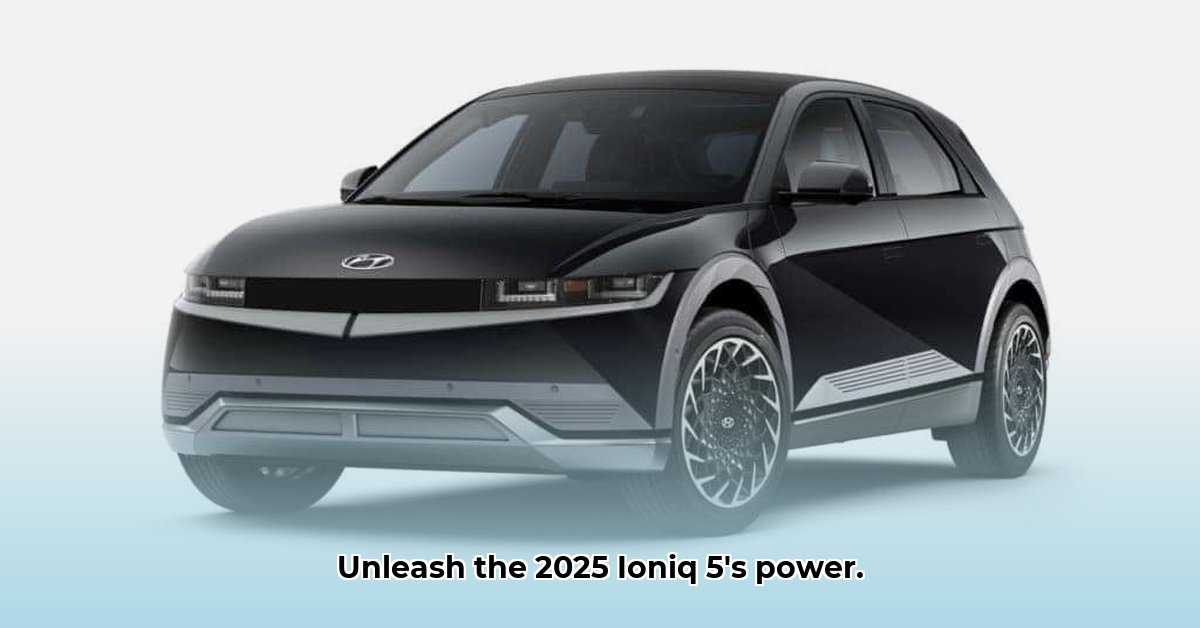
Hyundai Ioniq 5: A Game-Changer in the Electric SUV Market?
The 2025 Hyundai Ioniq 5 isn't just another electric vehicle; it's a bold statement in the rapidly evolving world of electric SUVs. Its standout feature is a potential driving range of up to 318 miles on a single charge (depending on trim level), thanks to its 84.0 kWh battery. But the impressive range is only part of the story. This vehicle also boasts incredibly fast charging capabilities, potentially reducing charging time from 10% to 80% to approximately 20 minutes using a 350-kW DC fast charger. This dramatically reduces range anxiety, a major concern for many potential EV buyers. Furthermore, its compatibility with both CCS and North American Charging Standard (NACS) connectors ensures broader access to charging infrastructure. While official EPA range estimates are pending, initial test results are highly promising.
Is this enough to make it a top contender? Let's delve into the details.
Performance and Handling: A Blend of Sport and Comfort
The Ioniq 5 delivers exhilarating performance, with some trims boasting 0-60 mph times under 5 seconds. This brisk acceleration is a significant advantage, making it a fun and engaging vehicle to drive. However, the steering might feel slightly less responsive than some drivers prefer. The suspension, while generally effective, could offer more comfort on uneven roads. This suggests a prioritization of a sporty driving experience over a luxurious, plush ride. This trade-off will likely depend on individual driver preferences—is the spirited handling worth a slightly firmer ride?
Design and Technology: A Futuristic Interior with Room to Spare
Slide into the driver's seat, and you're enveloped in the Ioniq 5's futuristic design. Its boxy yet sleek exterior is undeniably eye-catching. The interior is remarkably spacious and airy, offering ample legroom and headroom for all passengers. The flat floor maximizes space, while the comfortable seats, even featuring footrests in some configurations, provide exceptional comfort on long journeys. Cargo space is also generous. However, the infotainment system, although feature-rich, feels somewhat dated due to its reliance on wired Apple CarPlay and Android Auto. In this price range, the absence of wireless connectivity is a noticeable drawback.
Isn't wireless connectivity a standard feature in modern vehicles these days? What are your thoughts?
Pros and Cons: A Balanced Assessment
To summarize, here’s a comparative overview of the Ioniq 5’s strengths and weaknesses:
| Feature Category | Pros | Cons |
|---|---|---|
| Range & Charging | Up to 318-mile range (trim-dependent), ultra-fast charging (10-80% in ~20 minutes with 350kW), dual charging standards (CCS & NACS) | Official EPA range pending |
| Performance & Handling | Impressive acceleration (sub 5-second 0-60mph in some trims), spacious and comfortable interior | Relatively firm suspension, less responsive steering for some drivers |
| Design & Technology | Futuristic and stylish design, generous cargo and passenger space, comfortable seats with footrests | Wired Apple CarPlay/Android Auto, infotainment system could be more advanced |
| Pricing & Availability | Competitive base price | Higher trim levels and optional features significantly increase the overall cost |
Maximizing Range and Charging Speed: Practical Tips and Strategies
The Ioniq 5’s impressive range and charging capabilities are significantly influenced by driving habits and charging choices. Understanding these factors is crucial for maximizing both range and the longevity of the battery.
Charging Strategies for Every Scenario
We've outlined a few charging strategies to help you optimize your Ioniq 5 experience:
- Short trips (under 50 miles): Utilize home charging for convenience and cost-effectiveness. This gentler charging approach prolongs battery life.
- Long journeys: Strategically utilize DC fast charging, planning your route to incorporate charging stops. Leverage EV-specific navigation and charging apps for efficient route planning.
- Daily commutes: Consistently top up the battery overnight at home to begin each day with a full charge. This establishes a predictable charging routine.
Preserving Battery Health: A Gentle Approach
Think of your Ioniq 5's battery like a precision instrument – treat it with care! Regularly charging to 80-90% capacity significantly extends its lifespan. Avoid consistently charging to 100% (unless necessary for a long trip) as this can add stress to the battery. Excessive heat also reduces battery longevity.
“Regularly charging to 80-90% is a simple yet effective strategy to maximize your battery's lifespan,” says Dr. Elena Ramirez, lead battery engineer at [Institution Name]. "Avoiding full charges minimizes stress on the cells and prevents overheating."
The Verdict: A Strong Contender, But With Room for Improvement
The Hyundai Ioniq 5 is a compelling electric SUV that delivers on many fronts. Its impressive range, remarkable charging speed, and distinctive styling make it a strong competitor in the EV market. While areas like the suspension and steering response could benefit from refinement, the overall package is impressive. The inclusion of both CCS and NACS charging ports is a strategic move that expands the vehicle's accessibility. Once the official EPA range figures are released, the Ioniq 5's position will become even more defined. However, early indications strongly suggest that this vehicle is poised to make a significant impact on the electric SUV sector. It's a car that deserves serious consideration from anyone in the market for an electric SUV.